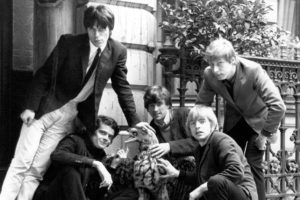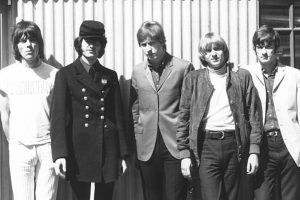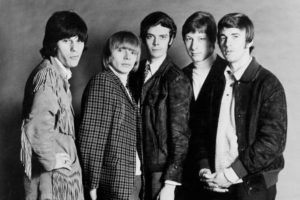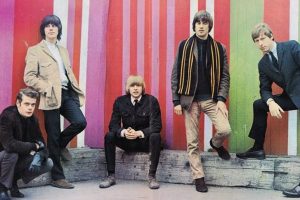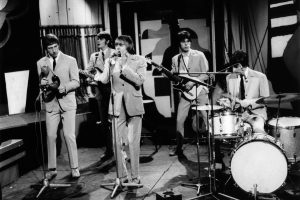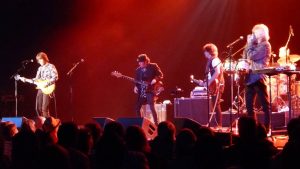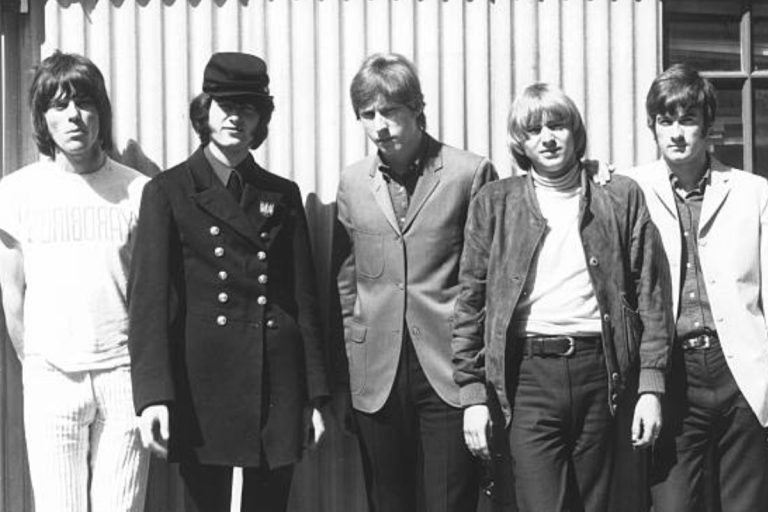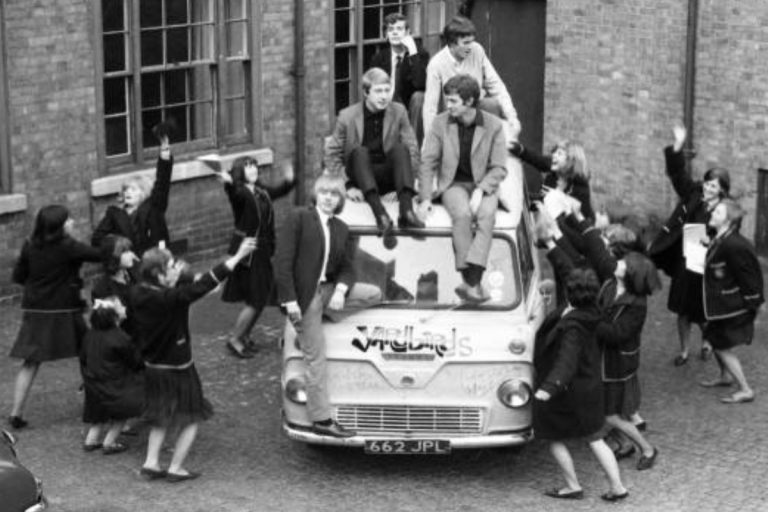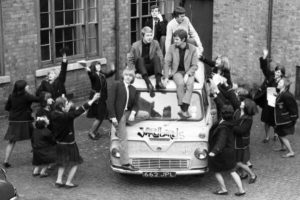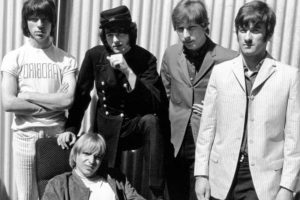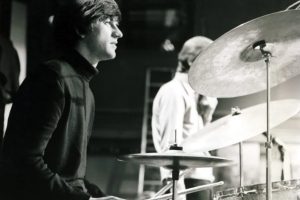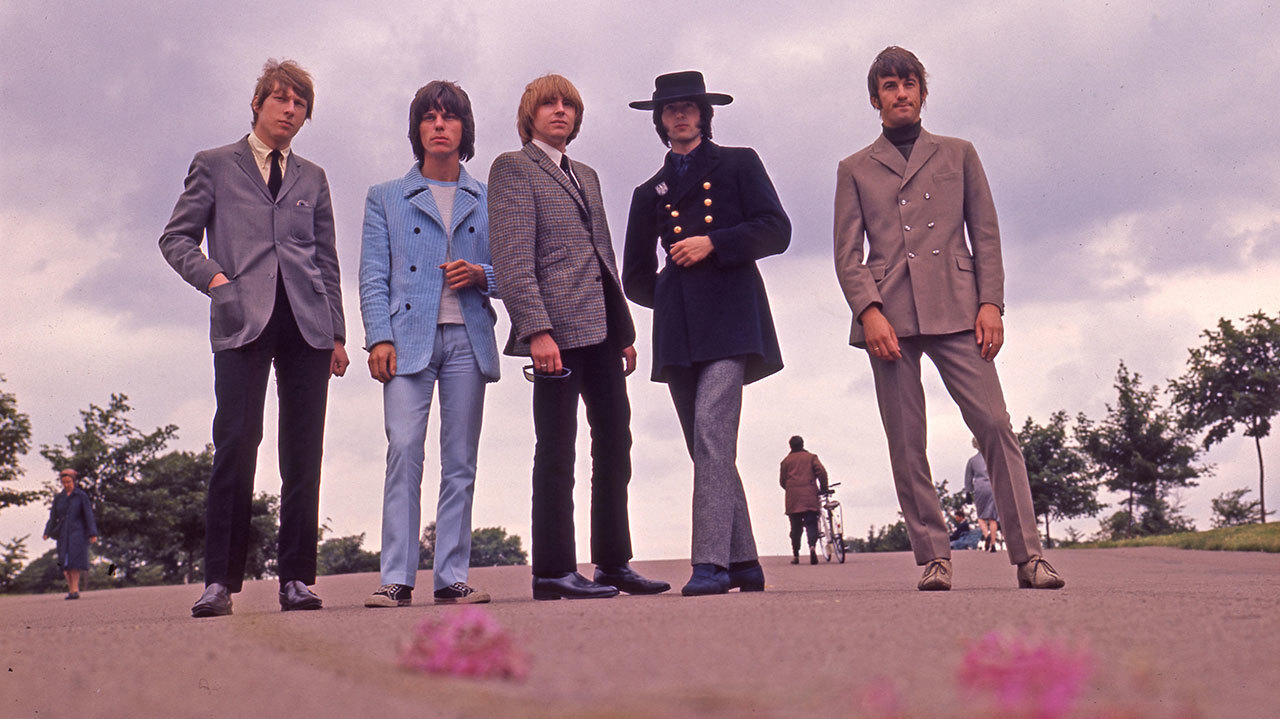
The Yardbirds hold an indelible place in music history as a band that bridged the divide between traditional blues and experimental rock, ultimately shaping the very foundations of modern music. Emerging during the British blues revival of the 1960s, The Yardbirds quickly gained recognition for their raw talent, dynamic live performances, and innovative approach to sound. While the band is often remembered as the launchpad for three of the greatest guitarists in history—Eric Clapton, Jeff Beck, and Jimmy Page—their influence extends far beyond their personnel.
Through their pioneering use of feedback, distortion, and extended improvisational “rave-ups,” The Yardbirds redefined what a band could achieve in rock music. Their willingness to experiment, coupled with their deep respect for the blues, set them apart from their contemporaries. This article explores their journey from a Chicago blues-inspired group to innovators of rock and roll, tracing their lasting legacy and cultural impact.
The Birth of The Yardbirds
Early Influences and Formation
The Yardbirds’ story begins in 1963, at the height of the British blues revival. This movement saw young British musicians rediscovering and celebrating the electrifying sounds of American blues legends like Muddy Waters, Howlin’ Wolf, and Sonny Boy Williamson. These artists’ emotive vocals, complex rhythms, and groundbreaking guitar work served as a blueprint for the band’s founding members: Keith Relf (vocals and harmonica), Paul Samwell-Smith (bass), Chris Dreja (rhythm guitar), Jim McCarty (drums), and Anthony “Top” Topham (lead guitar).
The Crawdaddy Club in Richmond played a crucial role in The Yardbirds’ early success. This venue, known for launching emerging talent, provided a stage for the band to hone their craft. Their performances were electrifying, characterized by their signature “rave-ups,” where the music would build to a frenzied crescendo. These moments of improvisation showcased their technical prowess and set them apart from other acts in the burgeoning blues scene.
Topham’s departure in late 1963, due to family pressures, marked a turning point for the band. His replacement, Eric Clapton, brought a blues purist’s sensibility and exceptional technical skill that would shape The Yardbirds’ sound during their formative years. Clapton’s influence elevated the band’s performances and recordings, cementing their reputation as one of the most exciting acts in London.
The Blues Boom in the UK
The British blues revival was more than a musical movement; it was a cultural phenomenon that resonated with the post-war generation. American blues spoke to themes of struggle and resilience, which struck a chord with young British audiences. Bands like The Rolling Stones, The Animals, and John Mayall’s Bluesbreakers rose to prominence during this time, each interpreting blues music in their unique way.
The Yardbirds stood out for their innovative approach. While many contemporaries sought to replicate the blues faithfully, The Yardbirds blended its raw emotional power with their own experimental edge. Their use of electric guitars, harmonicas, and layered arrangements gave their music a modernity that hinted at the possibilities of rock and roll. This fusion of tradition and innovation set the stage for their evolution into a genre-defining force.
Transition from Blues to Rock
The Impact of Eric Clapton
Eric Clapton’s time with The Yardbirds was marked by a deep commitment to the authenticity of the blues. A self-proclaimed blues purist, Clapton idolized artists like B.B. King and Freddie King, channeling their influence into his playing. His technical precision and emotional depth were evident in tracks like “Smokestack Lightning” and “Good Morning Little Schoolgirl.”
“Smokestack Lightning,” a reinterpretation of Howlin’ Wolf’s classic, became a staple of The Yardbirds’ live performances. Clapton’s improvisational solos on this track showcased his ability to balance traditional blues phrasing with the high-energy demands of rock. Similarly, “Good Morning Little Schoolgirl” demonstrated Clapton’s skill in modernizing the blues, blending its soulful essence with innovative arrangements.
However, Clapton’s tenure with The Yardbirds came to an abrupt end in 1965, following the release of “For Your Love.” This pop-oriented track, written by Graham Gouldman, marked a departure from the band’s blues roots. While the song’s commercial success introduced The Yardbirds to a broader audience, it clashed with Clapton’s artistic vision, prompting him to leave the band and join John Mayall’s Bluesbreakers.
Commercial Success with “For Your Love”
The release of “For Your Love” was a watershed moment for The Yardbirds. Its unique arrangement, featuring a harpsichord riff and a catchy melody, propelled the band into mainstream success. The song reached the top 10 in both the UK and the US, expanding their audience and solidifying their place in the music industry.
Graham Gouldman’s contribution as a songwriter was instrumental in this success. His ability to craft accessible yet sophisticated melodies demonstrated The Yardbirds’ potential to evolve beyond their blues roots. While Clapton’s departure highlighted the tensions within the band, it also paved the way for the arrival of Jeff Beck, whose experimental approach would take their music in bold new directions.
Innovators in Rock Music
Jeff Beck’s Experimental Era
Jeff Beck’s entry into The Yardbirds in 1965 marked the beginning of their most experimental phase. Beck was a virtuoso whose approach to the guitar was both innovative and fearless. He introduced techniques like feedback, sustain, and distortion, which transformed the electric guitar into an instrument capable of producing entirely new sounds.
“Shapes of Things” is a prime example of Beck’s influence. Often regarded as one of the first psychedelic rock songs, this track showcased his ability to blend technical precision with creative exploration. The song’s feedback-laden solos and atmospheric soundscapes captured the spirit of the 1960s, aligning The Yardbirds with the era’s countercultural movement.
Beck’s live performances were equally groundbreaking. His improvisational skills and experimental use of effects pedals captivated audiences, setting a new standard for what a guitar solo could achieve. Whether bending strings to create haunting melodies or manipulating feedback to add layers of intensity, Beck redefined the role of the guitar in rock music.
Jimmy Page and the Birth of Heavy Rock
Jimmy Page’s arrival in 1966 marked the final chapter of The Yardbirds’ evolution. Initially joining as a bassist, Page soon transitioned to lead guitar, bringing a visionary approach that pushed the band into heavier, more complex territory.
The brief period when Beck and Page both played in the band produced some of The Yardbirds’ most innovative work. Tracks like “Happenings Ten Years Time Ago” showcased their interplay, blending dual lead guitars with intricate arrangements and darker tones. After Beck’s departure, Page took on a leadership role, steering The Yardbirds toward a sound that would later define Led Zeppelin.
“Dazed and Confused,” originally performed by The Yardbirds, exemplified Page’s ability to create music that was both atmospheric and powerful. The track’s haunting riffs and dramatic dynamics became a blueprint for the hard rock genre. Under Page’s guidance, The Yardbirds laid the foundation for the emergence of heavy metal, bridging the experimental rock of the 1960s with the arena-filling sound of the 1970s.
Legacy and Lasting Impact
Influence on Later Bands
The Yardbirds’ impact on rock music is both profound and enduring. Their willingness to experiment with sound and technique inspired countless artists, from Led Zeppelin and Aerosmith to The Black Keys and beyond.
Led Zeppelin, formed by Jimmy Page after The Yardbirds disbanded, carried forward their legacy of blending blues with hard rock. Tracks like “Dazed and Confused” and “Whole Lotta Love” owe their origins to The Yardbirds’ groundbreaking work. Aerosmith’s gritty, blues-infused sound similarly draws from The Yardbirds’ approach, while The Black Keys often echo their raw, emotive qualities.
The Yardbirds’ use of feedback, distortion, and improvisation became a template for rock music, influencing not only their contemporaries but also future generations of musicians.
The Yardbirds Today
Despite disbanding in 1968, The Yardbirds’ legacy remains vibrant. Reunion tours featuring original members like Jim McCarty have kept their music alive, introducing new audiences to their groundbreaking sound. Their induction into the Rock and Roll Hall of Fame in 1992 cemented their place in music history, recognizing their contributions to the evolution of rock.
The Yardbirds are more than a band; they are a symbol of creativity and innovation. Their music continues to inspire, proving that their impact is as relevant today as it was during their peak.
A Timeless Legacy
The Yardbirds’ journey is a testament to the power of transformation and innovation. From their roots as a Chicago blues-inspired band to their evolution into pioneers of rock, they redefined what was possible in the genre.
Each phase of their career brought groundbreaking contributions. Eric Clapton’s dedication to blues authenticity, Jeff Beck’s fearless experimentation, and Jimmy Page’s heavy rock vision each played a role in shaping the band’s legacy. Their influence extends beyond their years as an active group, touching every corner of rock music and inspiring countless artists.
Revisiting their music is not just a nostalgic journey—it’s an exploration of the roots of modern rock. The Yardbirds were more than a band; they were a movement that challenged conventions and created a blueprint for the future of music.
